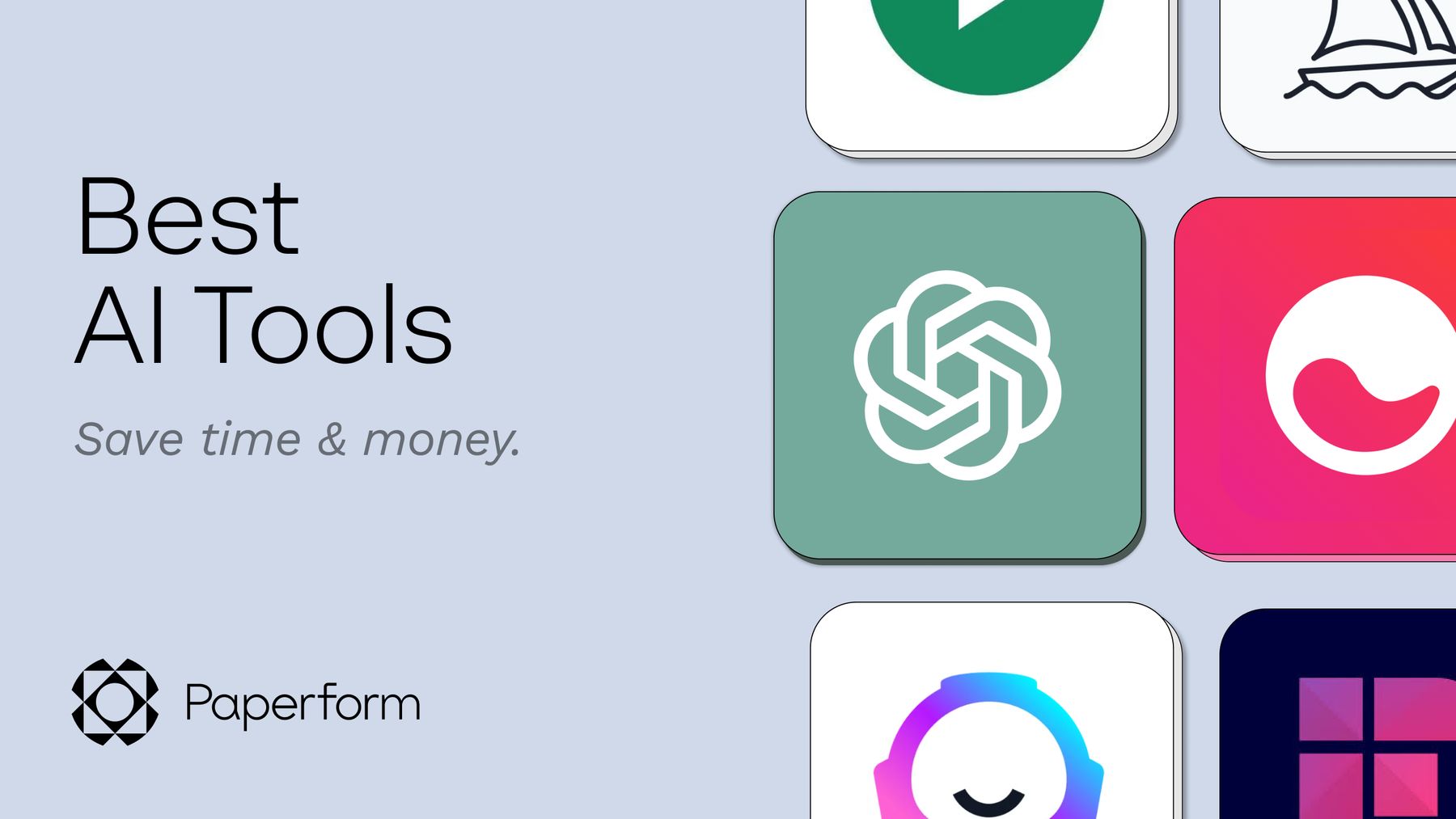Running an online business in 2025 feels a bit like juggling flaming torches while riding a unicycle – there’s always another task demanding your attention. Whether you’re responding to customer emails at midnight, creating content for social media, or trying to analyze your sales data, the workload never seems to end. But here’s the thing: you don’t have to do it all manually anymore.
The best AI tools for automating your online business have evolved from simple chatbots to sophisticated systems that can handle everything from customer service to financial forecasting. We’re not talking about replacing human creativity here – we’re talking about freeing you up to focus on what you do best while letting artificial intelligence handle the repetitive, time-consuming tasks that drain your energy and budget.
Let’s be honest, most of us didn’t start our businesses because we loved doing administrative work. We had ideas, passion, and the drive to create something meaningful. So why spend hours on tasks that smart software can handle better, faster, and often more accurately than we can?
Customer Service Automation: Your 24/7 Business Assistant
Customer service might be the most obvious place where AI tools for automating your online business shine brightest. Think about it – customers expect responses at all hours, but you can’t be glued to your inbox around the clock without burning out completely.
Modern AI chatbots have come a long way from those frustrating “I don’t understand your request” responses we all remember. Tools like Intercom, Zendesk’s Answer Bot, and ChatGPT-powered solutions can now handle complex customer inquiries, process returns, and even upsell products with surprising sophistication.
Here’s what’s really impressive: these systems learn from every interaction. When a customer asks about your return policy for the hundredth time, the AI doesn’t get tired or snippy – it provides the same helpful, consistent response every single time. Meanwhile, you’re free to work on growing your business instead of answering the same questions repeatedly.
The financial impact is significant too. Hiring customer service representatives for round-the-clock coverage would cost most small businesses tens of thousands of dollars annually. An AI solution typically runs between $50-500 per month, depending on your volume and needs.
Content Creation and Marketing Automation
Content creation used to mean spending entire weekends writing blog posts, crafting social media updates, and designing graphics. Now, AI tools for automating your online business can transform this time-intensive process into something much more manageable.
Tools like Jasper, Copy.ai, and newer platforms like Claude can help you generate product descriptions, email campaigns, and social media content in minutes rather than hours. But here’s the key – they’re not replacing your voice or creativity. Think of them as incredibly smart writing assistants that help you get past that blank page syndrome.
I’ve seen business owners use AI to create first drafts of their newsletter content, then add their personal touch and industry insights. The result? Content that maintains their authentic voice while cutting production time by 70% or more.
Social media scheduling platforms like Buffer and Hootsuite now incorporate AI to suggest optimal posting times, hashtags, and even content ideas based on your audience engagement patterns. It’s like having a marketing analyst working behind the scenes, constantly optimizing your strategy.
Financial Management and Analytics
Money management isn’t exactly the fun part of running a business, but it’s absolutely crucial. The good news is that AI tools for automating your online business can handle much of the heavy lifting when it comes to financial tracking and analysis.
QuickBooks and FreshBooks have integrated AI features that automatically categorize expenses, track mileage, and even predict cash flow. These systems can spot spending patterns you might miss and alert you to unusual transactions that could indicate fraud.
But it goes deeper than basic bookkeeping. AI-powered analytics tools can analyze your sales data to predict which products will be popular next month, identify your most valuable customers, and suggest pricing strategies that maximize profit without hurting demand.
One entrepreneur I know uses AI forecasting tools that analyze her historical sales data, seasonal trends, and even local event calendars to predict demand for her handmade jewelry business. She’s reduced inventory waste by 40% while ensuring she never runs out of popular items during peak seasons.
Inventory and Supply Chain Optimization
Managing inventory is like walking a tightrope – too little and you lose sales, too much and you tie up cash in products sitting in storage. AI tools for automating your online business excel at finding that sweet spot.
Platforms like TradeGecko (now QuickBooks Commerce) and Cin7 use machine learning to analyze sales patterns, supplier lead times, and seasonal fluctuations to automatically generate purchase orders. They consider factors humans often overlook, like how weather patterns affect demand or how social media trends might spike interest in certain products.
Amazon sellers have access to particularly sophisticated tools that can adjust pricing in real-time based on competitor activity, demand patterns, and inventory levels. Some sellers report profit increases of 15-25% simply by letting AI handle their pricing strategy.
Email Marketing and Lead Nurturing
Email marketing remains one of the highest ROI activities for online businesses, but it’s also incredibly time-consuming if done manually. AI tools for automating your online business have revolutionized how we think about email campaigns.
Mailchimp, ConvertKit, and ActiveCampaign now offer AI-powered features that go far beyond basic autoresponders. These systems can personalize subject lines for individual recipients, optimize send times based on when each person is most likely to open emails, and even adjust email content based on the recipient’s past behavior.
What’s really powerful is behavioral triggering. If someone abandons their shopping cart, the AI doesn’t just send a generic “you forgot something” email. It can analyze what they were looking at, how long they spent on your site, and what similar customers responded to, then craft a personalized message that’s much more likely to convert.
The segmentation capabilities are mind-blowing too. Instead of sending the same newsletter to everyone, AI can automatically group your subscribers based on purchase history, browsing behavior, and engagement patterns, then customize content for each group.
Project Management and Team Coordination
Even if you’re a solopreneur, keeping track of tasks, deadlines, and priorities can feel overwhelming. AI tools for automating your online business are making project management much more intuitive and automated.
Tools like Asana, Monday.com, and ClickUp now incorporate AI that can predict project timelines, identify potential bottlenecks, and automatically assign tasks based on team members’ workloads and expertise. They can even analyze your productivity patterns and suggest optimal work schedules.
For content creators and service providers, AI can track how long different types of projects actually take versus estimates, helping you price your services more accurately and set realistic deadlines with clients.
The Human Touch Still Matters
Here’s something important to remember as we embrace these AI tools for automating your online business: automation should enhance your human capabilities, not replace them entirely. The most successful businesses use AI to handle routine tasks while focusing their human energy on strategy, relationship building, and creative problem-solving.
Your customers still want to feel connected to a real person who cares about their experience. AI can handle the initial inquiry and gather information, but complex problems, emotional situations, and high-value relationships often require that human touch.
The key is finding the right balance. Let AI handle the repetitive tasks that drain your time and energy, then use that freed-up capacity to do the things only humans can do – build relationships, innovate, and grow your business strategically.
Making the Transition
Starting with AI automation doesn’t mean overhauling your entire operation overnight. The smartest approach is to identify your biggest time drains and address those first. Maybe it’s customer service emails that keep you up at night, or perhaps you’re spending too many hours creating social media content.
Choose one area, implement an AI solution, and give yourself time to learn how it works. Most of these tools offer free trials or low-cost starter plans, so you can test them without major financial commitment.
The investment in AI tools for automating your online business typically pays for itself within the first few months through time savings alone. But the real value comes from being able to focus on growing your business instead of just maintaining it.
Your future self will thank you for making the leap into automation. After all, isn’t it time your business worked for you instead of the other way around?







